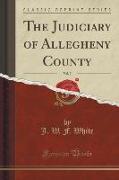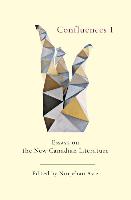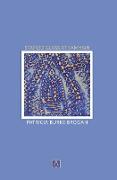The Judiciary of Allegheny County, Vol. 7 (Classic Reprint)
BücherAngebote / Angebote:
Excerpt from The Judiciary of Allegheny County, Vol. 7
The English system of Jurisprudence prevailed in Pennsylvania during the Proprietary Government. It was slightly modified by the Constitution of 1776, and radically changed by the Constitution of 1790. To understand our early courts, we must have some knowledge of the Provincial system.
The Act of 22 May, 1722, which continued in force, with slight amendments and some interruptions, until after the Revolution, established and regulated the courts. Each county had a court of "General Quarter Sessions of the Peace and Gaol Delivery, " for criminal offences, and a court of "Common Pleas, " for the trial of civil causes, each court required to hold four terms in the year. The Governor was authorized to appoint and commission "a competent number of Justices of the Peace" for each county, and they, or any three of them, could hold the Court of Quarter Sessions. He was also authorized to appoint and commission a competent number of persons to hold the Common Pleas. At first, the same persons were appointed and commissioned for both courts. But the Act of 9 Sept. 1759, prohibited the Justices of the Quarter Sessions from holding commissions as Judges of the Common Pleas. That Act required "five persons of the best discretion, capacity, judgment, and integrity" to be commissioned for the Common Pleas, any three of whom could hold the court. These justices and judges were appointed for life or during good behavior. The Constitution of 1776 limited them to a term of seven years, but the Constitution of 1790 restored the old rule of appointment for life or good behavior.
The Orphans' Court was established by Act of 29 March, 1713, to be held by the Justices of the Quarter Sessions.
About the Publisher
Forgotten Books publishes hundreds of thousands of rare and classic books. Find more at www.forgottenbooks.com
This book is a reproduction of an important historical work. Forgotten Books uses state-of-the-art technology to digitally reconstruct the work, preserving the original format whilst repairing imperfections present in the aged copy. In rare cases, an imperfection in the original, such as a blemish or missing page, may be replicated in our edition. We do, however, repair the vast majority of imperfections successfully, any imperfections that remain are intentionally left to preserve the state of such historical works.
Folgt in ca. 5 Arbeitstagen




